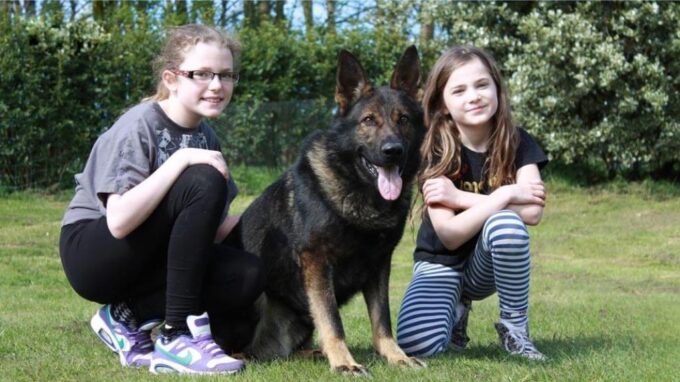In the United Kingdom, the demand for personal protection dogs has seen a significant rise in recent years as people seek to enhance their security and the safety of their loved ones. While many turn to professional trainers to acquire a fully trained personal protection dog, some dedicated individuals embark on the rewarding journey of training their own canine protector.
Training your own personal protection dog can be a fulfilling endeavor, but it comes with its own set of challenges and rewards. In this article, we will explore the process of training a protection dog, the key steps to follow, and the remarkable bond that can develop between you and your loyal guardian.
According to TotalK9, training a personal protection dog is a comprehensive process that requires patience, consistency, and a deep understanding of canine behavior. The most important steps to follow include obedience training, socialization, bite work, and handler protection. These foundational elements ensure that your dog is not only a protector but also a well-behaved and reliable companion.
Now, let’s explore the challenges and rewards of training your own personal protection dog.
Contents
The Training Process: Key Steps to Follow

- Obedience Training: The foundation of personal protection dog training is obedience. Teaching your dog basic commands such as sit, stay, and come is essential for effective communication. Obedience training establishes trust and control, making it easier to manage and direct your dog during protection training.
- Socialization: Socialization is crucial to expose your dog to various people, animals, environments, and situations. This helps them become well-adjusted and confident, reducing the likelihood of fear-based aggression. Socialization should start early and continue throughout your dog’s life.
- Bite Work: Bite work is a fundamental aspect of protection dog training. It involves teaching your dog to apprehend and hold onto an aggressor on command. This skill is vital for protecting you or your family in a threat situation. Bite work should be conducted under the guidance of a professional trainer to ensure safety and proper technique.
- Handler Protection: In addition to protecting against external threats, personal protection dogs should also protect their handlers. Training your dog to defend you on command is a critical aspect of their role. Handler protection training should be conducted carefully to avoid any risks or misunderstandings.
- Consistency and Repetition: Training a personal protection dog requires consistent and repetitive practice. Regular training sessions, positive reinforcement, and clear communication are essential to reinforce desired behaviors and maintain your dog’s skills.
- Legal and Ethical Considerations: Understanding the legal and ethical responsibilities of owning a personal protection dog is crucial. Ensure that your dog’s behavior is in compliance with local laws and regulations. It’s essential to strike a balance between having a protective dog and ensuring they are not a danger to others.
Challenges of Training Your Own Personal Protection Dog

- Time and Commitment: Training a personal protection dog is a significant time commitment. Consistent training sessions, socialization, and ongoing maintenance of skills require dedication and patience.
- Professional Guidance: While you can train your own protection dog, it’s highly recommended to seek guidance from experienced trainers, especially for bite work and handler protection. Improper training can lead to safety risks and behavioral issues.
- Costs: Training expenses, including professional guidance and equipment, can add up. It’s important to budget for these costs to ensure the training process is both safe and effective.
- Legal Considerations: Understanding the legal responsibilities and potential liabilities associated with owning a personal protection dog is essential. Failure to do so can result in legal issues.
Rewards of Training Your Own Personal Protection Dog
- Strong Bond: Training your own personal protection dog fosters a deep bond between you and your canine companion. The trust and partnership that develop are immensely rewarding.
- Customization: Training your own dog allows you to tailor the training to your specific needs and preferences. You can focus on the areas of protection that matter most to you.
- Companionship: Beyond their protective role, personal protection dogs are loyal and loving companions. Their presence provides a sense of security and emotional support.
- Personal Growth: Training a protection dog can be a personally fulfilling journey that enhances your knowledge of canine behavior and training techniques.
Personal Protection Dogs vs. Smart Home Security
In modern-day Britain, securing one’s home has become more of a necessity than a luxury. The evolution of smart home security systems has indeed been a game-changer, offering homeowners real-time surveillance and control right at their fingertips. From intruder alarms, CCTV cameras to smart door locks, the layer of safety these gadgets provide is invaluable. However, a TotalK9 expert elucidates that integrating a professionally trained protection dog into this mix could significantly elevate the security level of one’s sanctuary. These loyal and skilled canines not only act as a deterrent but also provide a sense of companionship that technology cannot replicate.
A Guard at the Gate: The Loyalty of Protection Dogs

The ancient bond between humans and dogs has stood the test of time, evolving beyond companionship. Today, personal protection dogs are professionally trained to guard their owners and their properties against threats. Unlike generic pet dogs, these canines undergo rigorous training to hone their protective instincts, making them an integral part of a family’s security arrangement.
The presence of a protection dog is often enough to deter potential intruders. Their sharp senses, loyalty, and the innate ability to sense danger make them a formidable guard. Additionally, they provide a level of emotional comfort and companionship that a machine can never emulate. In times of distress, the psychological benefit of having a living, breathing companion by your side is immeasurable.
In conclusion, training your own personal protection dog is a challenging but ultimately rewarding endeavor. It requires dedication, consistency, and a commitment to your dog’s well-being and safety. While professional guidance is essential, the bond that forms between you and your protector is a testament to the unique partnership that personal protection dogs offer. Through patience and perseverance, you can have not only a skilled guardian but also a loyal and cherished member of your family.


